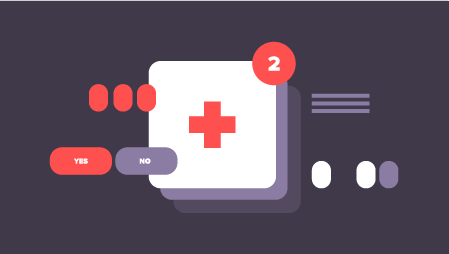Despite considerable progress in digital transformation, health care still is a digital dinosaur. The future of health care consists in laying today the foundation for a just, patient-centric and smart health system.
Today’s headlines are still made by the Coronavirus outbreak and more specifically, its impact on the worldwide economy leading to a severe crisis on global markets. While many sectors like the airline industry are facing a sharp decrease of demand resulting in a loss of billions of dollars in economic output, health care systems around the globe are threatened by critical care overload. The economic crisis of 2008 undeniably proved that a crisis causes companies to reduce their investment, including investment in innovation.
“The decade that shapes our contemporary imagination of crises is the 1970s, which exemplified the way a historic rupture can set an economy and a society on a new path.” (William Davies, The Guardian, March 2020)
But what if innovation is the only way of overcoming a crisis? Often, innovation is linked to a change of mindset making people more open towards a technology that was rejected for longtime because no necessity was seen. One of the best examples is remote work. It took an outbreak of a pandemic to integrate remote work and home office in daily business. Zoom has not been created in 2020 but in 2011 and after nine years, Zoom’s software usage saw a significant global increase. Following the introduction of quarantine measures in response to this year’s pandemic, business meetings, speaches and even conferences are held digitally. In fact, the main problem has been that many companies have always been reluctant in introducing digital processes and establishing a home office culture. The uniqueness of this crisis is that there is not an “either or” solution, but governments, companies and individuals are provided with an extremely limited set of possible solutions to live with this virus. The crisis in 2020, similarly to the crises in the 1970s, will present a historic rupture setting economy and a society on a new path (The last global crisis didn’t change the world. But this one could — William Davies), also and especially, because it is a crisis that does not primarily involve financial losses but most importantly the lives of many humans all over the world. In consequence, health care, despite its reputation of being a digital dinosaur, must become particularly innovative, connected, available anywhere, anytime and above all patient-centric.
Innovation in Health Care, that’s about different actors working together hand in hand
Innovation in health care is hard. That’s a fact! Problems range from costs to medical errors putting at risk human lives. Financial losses become of a secondary importance when the wellbeing of patients is deteriorated. In the past, enormous investments have been made in innovation but but too many efforts simply failed and resulted in innovation risk-aversion.
“Three kinds of innovation can make health care better and cheaper: One changes the ways consumers buy and use health care, another taps into technology, and the third generates new business models.” (Regina Herzlinger (Why Innovation in Healthcare is So Hard, June 2006, Harvard Business Review
Nevertheless, it is necessary to look at the different types of possible innovation in health care. According to Regina Herzlinger (Why Innovation in Healthcare is So Hard, June 2006, Harvard Business Review 84(5):58–66, 156),“three kinds of innovation can make health care better and cheaper: One changes the ways consumers buy and use health care, another taps into technology, and the third generates new business models.”

Switzerland-based The Ark — The Foundation for Innovation in Valais promotes innovation in health care and plays an important role as a solution accelerator and ecosystem mobiliser. The graphic above presents the so-called Health Innovation Square bringing together key actors within a future-oriented and unique health care ecosystem. Actors from business, R&D, technologies and health care work together hand in hand to drive successful innovation. The example of The Ark with its partnership and ecosystem character sets the direction of the future of health care.
“A patient-centric approach is a way healthcare systems can establish a partnership among practitioners, patients, and their families to align decisions with patients’ wants, needs, and preferences. This also includes the delivery of specific education and support patients need to make these decisions and participate in their own care.” (Healthgrades)
Partnering and actively involving patients within the process of development and innovation are also crucial to make health care innovations a success. Patient-centricity in health care is therefore of an enormous importance. It is a “way health care systems can establish a partnership among practitioners, patients, and their families to align decisions with patients’ wants, needs, and preferences”. Unfortunately, the term “Digital Health” is always associated with technically oriented and complex solutions. Most companies fail to make these solutions comprehensible and intelligible for patients. For example, the term “digital doctor” often refers to a chatbot in which a computer takes over communication. Involving patients’ needs will make possible to put patient-doctor communication in the foreground.
Mobile Health and Telemedicine on the rise
The health care system of today is essentially a health care system that was established in the middle of the last century and has not developed much further. Although the importance of digital solutions is recognized, their implementation is slow. Certainly, there have been enormous advances in medical diagnosis and treatment. The structure of care is in itself still the same and not much has changed. If you do not feel well nowadays, the first thing you do is to see your doctor. In the next steps, depending on the emergency, appointments can be made with a specialist in the hospital, tests or scans can be performed. The whole process is lengthy. It is important not to forget to mention that more than a third of humanity does not even have access to medicine. The digital transformation of the health care sector makes it possible to provide health care services efficiently, personalized, anywhere and anytime.

The global digital health care market, valued at USD 73.1 billion in 2017, is expected to reach a volume of USD 223.7 billion by 2023 and to develop at an average annual growth rate of 21 percent over the period (2018–2023). This development will be driven by innovative and mobile health technologies.
The Coronavirus pandemic certainly confirms this development and actively contributes to a rise of mobile health and telemedicine. If businesses are able to cope with the crisis by introducing remote work, why should health care, considering that there are 5.22 billion people that have a mobile device in the world meaning that nearly 70% of the world’s population has a mobile device, not be able to be provided remotely? In fact, many health concerns can be resolved telemedically in a single consultation. Waiting times for an appointment are virtually non-existent and travel costs to the doctor can also be saved. Elderly people can benefit from the fact that they can stay at home longer with telemedical support instead of having to go to a retirement home.
Especially during the pandemic, we have seen that our health care system quickly reaches its limits due to a lack of flexibility. The worsening shortage of doctors also means that many people already have no doctors. Telemedical and digital services such as those offered by Misanto from Switzerland will play a vital role in tomorrow’s health care system. After all, access to the Internet and thus to such services continues to increase.
The future of health care — A concluding outlook on what to expect
In last year’s ranking of the degree of maturity of digitization in the health care sector by the Bertelsmann Foundation, Switzerland came in 14th out of 17 countries examined. There is definitely a need to catch up in many areas. The current state of affairs with steadily rising costs for the health care system in Switzerland has already become a permanent state of affairs over the past few years. This burden is increasing, especially for private households. In any case, we must act quickly and actively manage the digital change in the health care system.

The use of digital health technologies will reduce waiting times during visits to the doctor and will make paperless prescriptions possible. Easier access to information through digital channels will ensure greater transparency and increase the health competence of patients. Patients will expect more from their providers and doctors must apply an honest and clear approach to the care. Consequently, a high quality patient-doctor communication will play an enormously important role. Involving patients and considering their needs will therefore make possible to steer the health care towards a patient-centric future. Health care professionals will also benefit from the digital transformation because the latter will reduce the workload that got out of control during the Coronavirus.





